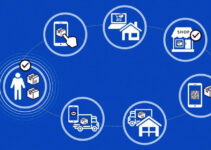Lego is a plastic toys and building blocks manufacturing Denmark multinational company. Ole Kirk Christiansen founded the toy company in 1932. Today, we’ll discuss the value chain analysis of Lego supply chain analysis; primary and supporting activities in the process of value chain analysis Example Company. They are inbound and outbound logistics, operations, marketing, and customer service; infrastructure, HRM, technology, and procurement as an application of the value chain analysis process.
Suppliers and Vendors of Lego
- Base Sales and Marketing
- Balyfa Hungary
- Avient Colorants
- Artigraf SA DE CV
- American Poly Del Norte
- AMB Industri AB
- All4Label Mexico
- AM. RAMP & CO
- Broadway Industries
- Precision Broadway
- Sonoco
The Value chain analysis of Lego supply chain analysis would analyze the primary and supporting activities in the process of value chain analysis. They’re inbound and outbound logistics, operations, marketing, and services; infrastructure, HRM, technology, and procurement. Here’s the supply chain analysis of Lego value chain analysis company example as follows;
Value Chain Analysis of Lego
Let’s discuss the primary and supporting activities involved in the process of value chain analysis of Lego supply chain analysis. It is an application of value chain analysis based on Porter’s model; some of the key elements and components of value chain analysis are as follows;
Primary Activities of Lego
The primary activities are directly involved in the production of products and goods and adding value to the toy company. Some of the five main primary activities in the value chain analysis of Lego supply chain analysis are as follows;
Inbound Logistics of Lego
I-Large Suppliers Network
According to an estimate, Lego deals with approximately 11000 suppliers and vendors in various countries across the world. The large and diverse suppliers network helps the company to ensure the smooth availability of raw supplies and materials for production. The toy company’s suppliers’ concentration in different countries is as follows;
- Moulding Suppliers in Europe, Africa, and the Middle East – 700
- Packaging and Processing Suppliers in Europe, Middle East, and Africa – 4500
- Molding, Processing, and Packing suppliers in America – 3500
- 1200 in China and Asia
II-Transparent Supply Chain
Lego is completely transparent about its entire supply chain network. It comprises a list and address of the company’s suppliers vendors, and manufacturing factories across the world. In fact, the toy company has made a strong commitment to ethical sourcing; a strict code of conduct for suppliers, and compliance with human rights standards. The brand conducts training programs for its suppliers to amplify their capabilities and ensure their compliance with the laws and regulations.
III-Recycled Prototype Bricks
Years of continuous research and development led the company to develop prototype bricks from PET plastic bottles in 2021. It was a breakthrough for recycling plastic bottles and building plastic bricks from recycled material. However, it helps the company to gain a competitive edge in the market.
Outbound Logistics of Lego
I-Transportation & Distribution Channels
Lego employs various transportation channels for the distribution of its toys to the end consumers and retail outlets. The logistical network and channels move raw supplies and materials to the manufacturing facilities and then deliver the finished goods to the retail outlets and the end consumers.
II-E-commerce Platform
Lego has built an e-commerce platform to directly connect with the end customers by avoiding all the middle parties. The company employs various transportation and distribution channels for delivering the bricks toys to the end consumers. The delivery time would take 5 to 28 days depending on the location of end consumers and delivery channel.
Operations of Lego
I-Manufacturing Facilities
Lego has roundabout 6 manufacturing factories in different countries like Mexico, Vietnam, China, Hungry, the Czech Republic, and Denmark. The global network of production factories helps the toy brand to ensure the smooth production process and timely delivery of the finished goods to the end consumers.
II-Distribution Centers & Warehouses
Lego has built 4 distribution centers and 11 warehouses in different geographical regions and markets; Switzerland, Germany, France, Denmark, Mexico, and other countries worldwide. They receive finished toys from the different production manufacturing facilities; and temporarily store, organize, and package them before shipment. The toy company precisely built them in those regions and markets in proximity to the retail stores and supermarkets. It allows them to save time and resources and timely deliver them to the end consumers.
Marketing & Sales of Lego
I-Marketing and Advertisement
Lego employs multiple marketing channels and advertisement campaigns for the promotion of its toy products and brand. They like TV, print media, sponsorships, social media channels, and movie franchises. However, the objective of multiple media channel campaigns is to connect with the end consumers and directly promote its products to them.
Services of Lego
Lego offers a wide range of services to the end consumers along with physical toy products. They help the company to improve the customer satisfaction level and promote product and brand loyalty among them. However, some of the main services of Lego are as follows;
- Product recall in case of defects
- Multiple payment methods
- Returns and shipment services
- Replacement parts services
- Offering building instructions
Supporting Activities of Lego
Supporting activities are indirectly involved in the production of products and goods and adding value to the toy company. Some of the main supporting activities in the value chain analysis of Lego supply chain analysis are as follows;
Infrastructure of Lego
Lego has established a very large infrastructure of production and manufacturing factories; supplier network, multiple distribution channels, and warehouses. Well-organized infrastructure helps the company to smoothly perform its various operations and timely deliver the finished goods toys to the end consumers.
HRM of Lego
Lego has employed approximately 25000 employees to manage its global operations. The human resource management department of the company plays a key role in building an innovative working environment; setting up regulations for suppliers, and complying with environmental sustainability regulations and standards.
Technological Development of Lego
Lego invests a significant amount of capital resources in research for the development of new building block ideas, unique combinations, and efficient production materials and methods. The company welcomes any type of idea for building unique designs. In fact, the company has set up a special group of Lego users; people share their unique ideas and the most innovative building idea would receive the prize.
Procurement of Lego
Lego is highly careful about ethical and sustainable sourcing and procurement of raw materials and supplies from various suppliers worldwide. In order to ensure sustainable procurement, the company has set up clear regulations and standards for suppliers.
Conclusion: Lego Value Chain Analysis Example Company | Application of Value Chain Analysis Process
After a careful study of the value chain analysis of Lego; we have realized that Lego is the world’s leading retail toys manufacturing Danish multinational company. If you are learning about the Lego value chain analysis example company; then you should keep in mind the abovementioned primary and supporting activities. They’re inbound and outbound logistics; operations, marketing and sales, and services; infrastructure, procurement, HRM, and technological development as an application of the value chain analysis process.
Ahsan is an accomplished researcher and has a deep insight in worldly life affairs. He goes Live 3 days a week on various social media platforms. Other than research writing, he’s a very interesting person.


